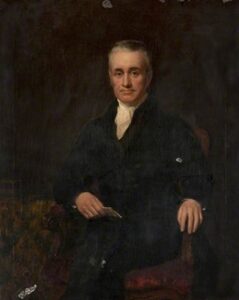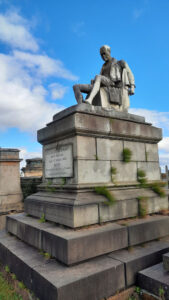Charles Tennant (1768-1838)
by Colin Campbell
Charles was born on 3 May 1768 at Alloway in Ayrshire to John Tennant and Margaret McClure one of thirteen children. He was educated at Ochiltree Parish School.
His father initially apprenticed him to be a handloom weaver.
In 1795 he married Margaret Wilson in Paisley. They would have ten children.
The growth of the textile industry in Britain in the late 18th century was hindered by the long delay in bleaching cloth. Due to his being a weaver, Charles became interested in the bleaching process. He perfected the technique of using chlorine and lime to produce highly effective chlorine bleaches and the production of bleaching powder (helped by Charles Mackintosh) in 1799. He patented it that year.
In 1800 Charles founded his chemical works at St. Rollox, Springburn, Glasgow. The principal product was bleaching powder which was sold worldwide. By 1815 the business was known as Charles Tennant & Co. and had expanded into other chemicals, mining, metallurgy and explosives. The early rail network in Scotland were also areas of great interest to Charles Tennant; he greatly assisted in the securing the Act (July 1838) which would lead to the construction of the Edinburgh to Glasgow railway line.
In the 1830s and 40s the St. Rollox plant was reputed to be the largest chemical works in the world. It employed over one thousand persons and dominated the local economy.
He had founded a business empire which was to grow under his son and grandson to be of enormous wealth. His descendants became extremely well connected in British aristocratic and political circles.
Tennant died at his home at Abercromby Place in Glasgow on 1 October 1838, aged 70.
(Ack; National Galleries of Scotland (image), Britannica, NRS, Graces Guide)











